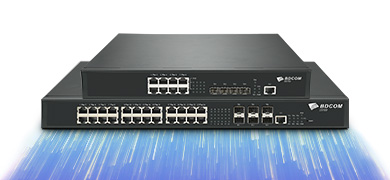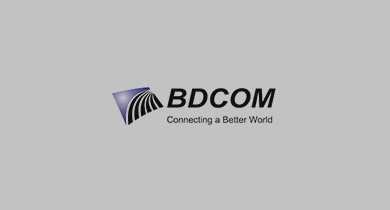Medical Industry Network Solutions
"Smart Healthcare" solution can be divided into the following three systems: Smart Hospital System, Regional Health System, and Home Health System.
For the Smart Hospital System, there are various applications such as Hospital Information System (HIS), Electronic Medical Record System (EMRS), Picture Archiving and Communication System (PACS), Radiology Information System (RIS), Laboratory Information System (LIS), Hospital Mobile Ward Rounds System, Mobile Nursing System, Mobile Medical Care System, Mobile Infusion System, and Mobile Appointment System. All these systems are built on wired or wireless network infrastructure.
Regional Health System consists of the Regional Health Platform and Public Health System. The Regional Health Platform includes a regional health information platform that collects, processes, and transmits all information from community centers, hospitals, medical research institutions, and health regulatory departments. This involves the construction of a dedicated medical data network and data center.
Home Health System, similar to the Regional Health System, requires the establishment of a public health network to achieve interoperability with the government information network. It also involves the construction of a healthcare data center to support basic health data and various application systems.
Smart Hospital Network Construction Requirements
Analysis of Network Requirements for Large Hospitals (600+ Beds)
l Stability: High
l Performance: High
l Wireless demand: Typically present
l Physical isolation between internal and external networks
l Device network
Analysis of Network Requirements for Medium-Sized Hospitals (200-600 Beds)
l Stability: High
l Performance: High
l Wireless demand: Definitely required
l Physical isolation between internal and external networks
l Device network
Analysis of Network Requirements for Small Hospitals (Below 200 Beds)
l Stability: High
l Performance: High
l Physical isolation between internal and external networks may not be necessary; considering cost-effectiveness, some hospitals may opt for logical isolation between internal and external networks
l Device network
Other Healthcare Facilities (e.g., Rehabilitation Centers, Nursing Homes)
Expansion and Renovation of Hospital Campus Network
The renovation and expansion of a smart hospital campus network typically involve three aspects:
l Expansion of Hospital Facilities: This includes the construction of new buildings, such as additional patient wards or office buildings. The network system is an essential component of these new facilities, requiring an expansion of the existing network infrastructure. In most cases, hospitals have separate networks for their internal and external communications, and the internal network may have significant data volume. The construction of new patient wards or buildings will also require the deployment of wireless networks to support existing wireless ward rounds, wireless diagnosis systems, and wireless nursing systems.
l Addition of Smart Hospital Systems: Most hospitals implement their information systems in stages, and as their services and operations develop, there is a need for additional network requirements. This may include the introduction of new wireless ward rounds systems, the implementation of packs systems, or the establishment of equipment networks (e.g., monitoring networks) that require independent wireless and equipment network infrastructures.
l Renovation of Existing Network Systems: In some cases, hospitals may have outdated network equipment or systems that need to be renovated due to prolonged usage or technological advancements. To address such requirements, effective communication and collaboration with the hospital's information center are crucial to ensure a clear understanding of the specific renovation scope and objectives for targeted project.
Other network renovation projects may include upgrades to network gateways or other infrastructure components.
Regional Healthcare Informationization Requirements (e.g., New Rural Cooperative Medical Network Construction, Regional Medical Insurance Network Construction, Municipal Medical Insurance Network, etc.)
Medical Industry Data Center Network Construction Requirements
Hospital Branch Solutions Requirements
1.1 Smart Hospital Network Construction Requirements
1.1.1 Large-Scale Hospitals (600+ Beds)
Core Network:
Orthogonal Architecture: Higher performance, stability, and stronger capacity.
Dual-Core Virtualization: Simplified network architecture, improved device utilization.
Green and Environmentally Friendly: Advanced "GreenTouch" concept and industry-leading "Smart@CHIP" energy-saving technology, achieving energy efficiency and significantly reducing equipment energy consumption. It promotes low-carbon environmental protection and effectively reduces operational and maintenance costs.
Independent and Controllable (optional): Equipped with BDCOM's independent intellectual property BDROS 6th generation operating system, which provides high-performance L2/L3/L4 line-speed switching services. It integrates various network services such as IPv6, MPLS VPN, network security, traffic analysis, and virtualization.
Robust and Reliable: High-performance redundant hardware architecture combined with uninterrupted upgrades, uninterrupted forwarding, graceful restart, redundant protection, and other high-reliability technologies
Versatile Business Cards: Supports large ARP/MAC table entries and ultra-large port caches. Supports line cards with ultra-low latency and large port caches. Mainly used in the core of cloud computing and parallel computing data centers. Mainly used in supercomputing centers and large-scale campus network cores for ultra-low latency requirements
Wireless Network:
Enhanced Adaptability: Integrated Fat and Thin AP: Switching between fat and thin modes without replacing the AP firmware. Supports both PoE and adapter power supply. Supports 802.11ac protocol with air interface bandwidth of up to Gigabit, enabling seamless upgrade from 100Mbps wireless networks to Gigabit wireless networks and providing high-bandwidth support for multiple user access.
Higher Reliability: Dual Power Supply for AC: The dual power supply design provides hardware-level security assurance for stable wireless network usage, ensuring 24/7 availability of the wireless network.
Easier Management: Integrated Wired and Wireless Network Management Software, Intelligent Network Upgrade Service Platform: Customized upgrades based on user requirements, enabling dynamic updates of network devices within the region. Supports cloud deployment: BDCOM has deployed wireless marketing cloud platforms and upgrade service platforms, allowing users to purchase wireless hardware and enjoy free wireless marketing services and intelligent upgrade services, greatly reducing network deployment costs.
Enhanced Business Value: BDCOM cloud platform delivers personalized advertising messages based on factors such as user attributes, geographical differences, and time periods, enhancing the overall value of advertisements. BDCOM cloud platform integrates data analysis, business BI analysis, and user attribute analysis functions, providing visualized graphical interfaces to assist users in making business decisions.
Cost-Effective Wireless Solutions: Wireless Network Controller = Router + Traffic Control Gateway + Wireless Controller + Authentication Gateway: BDCOM WSC6100 Series Wireless Network Controller integrates broadband routing, traffic control, wireless control, and portal authentication functions, saving space, reducing network failure points, and minimizing energy consumption.
Comprehensive Authentication Protocols: As the industry's first wireless marketing platform that simultaneously supports wifiDOG and Portal 2.0 protocols, BDCOM cloud platform supports various access authentication methods, including SMS, email, Alipay accounts, WeChat accounts, Weibo accounts, YiXin accounts, WeChat public accounts, merchant membership numbers, app downloads, app authentication, QR code scanning, and seamless authentication. It provides consumer identity recognition, information archiving, LBS correlation, WiFi probe, O2O closed-loop, data collection, and analysis services tailored to various WiFi venues.
Convergence Network Solutions:
Telecom-grade Reliability: High-performance redundant hardware architecture combined with uninterrupted upgrades, forwarding, graceful restart, and redundancy protection technologies ensure uninterrupted communication capabilities for the network.
Rich Business Modules: Supports ARP/MAC large table entries, large port caching, and ultra-low latency line cards.
Innovative Virtualization Technology: The innovative BVSS (BDCOM Virtual Switch System), virtual cluster switching technology, can virtualize multiple physical devices into a logical device, providing unparalleled performance, reliability, flexibility, and management compared to independent physical devices.
Comprehensive IPv6 Solution: Fully supports the IPv6 protocol suite, including IPv6 neighbor discovery, ICMPv6, Path MTU discovery, DHCPv6, and other IPv6 features.
Innovative Green and Environmentally Friendly Design: S8500 adopts advanced power system architecture design, achieving efficient power conversion. It features unique power monitoring, soft start, sequential power-on, and other functions, real-time monitoring of the system's operational status, intelligent adjustment, and deep energy savings.
Access Layer Network:
Advanced Hardware Architecture Design, Powerful Processing Capability: Achieving the highest port density with 48 Gigabit and 8 10Gigabit ports on a 1U rack-mounted switch; Gigabit access and 10-Gigabit uplink are particularly suitable for high-traffic environments in hospitals.
Operational-level High Reliability: Based on the Hitless Protection System (HPS), critical power modules of the S3900 series are dual redundant and hot-swappable, supporting seamless switchover during failures without manual intervention.
Rich Features: Comprehensive Layer 2 and Layer 3 multicast routing protocols to meet the access requirements of high-definition video monitoring and high-speed transmission of high-definition images for multiple endpoints; complete Layer 3 routing protocols with large routing table capacity to meet various application needs in hospitals.
Innovative Virtualization Technology: Innovative BDCOM Virtual Switch System (BVSS), virtualization cluster switching technology, can virtualize multiple physical devices into a logical device, providing unparalleled performance, reliability, flexibility, and management compared to standalone physical devices.
Innovative Green and Environmentally Friendly Design: BDCOM access devices feature intelligent power management systems, intelligent fan management systems, and support for Energy-Efficient Ethernet (EEE) functionality following the international standard IEEE 802.3az, effectively reducing energy consumption.
xPON (Passive Optical Network) Network:
Optimized Backbone Fiber Resource Utilization: Based on point-to-multipoint network architecture, the central office (CO) uses OLT (Optical Line Terminal) equipment to aggregate ONT (Optical Network Terminal) endpoints. Each PON port can support up to 128 ONTs for simultaneous online registration and communication, resulting in significant savings in backbone fiber resources.
Reduced Engineering Effort: Leveraging the passive nature of the network, passive splitters do not require power supply, allowing for flexible deployment and convenient fiber routing, thus reducing engineering effort.
Low Power Supply Requirements: With the passive nature of the network, passive splitters do not require power supply, resulting in significantly reduced power supply needs. The ODN (Optical Distribution Network) does not require a specific equipment room environment, leading to savings in facility resources.
Reduced Failure Points: Operating on a passive network, the ODN experiences fewer failure points, reducing maintenance workload.
Diverse Management Capabilities: For SFU (Single Family Unit) devices, NMS (Network Management System) can provide integrated management of both OLT and ONT, and OLT can remotely operate SFU devices through OMCI (ONT Management and Control Interface). For HGU (Home Gateway Unit) devices, remote control can be achieved through TR069 protocol.
Comprehensive Alarm Mechanism: In the event of a failure, the system will automatically report trap information to ensure timely detection and swift resolution of the issue.
1.1.1.2 Typical Configuration Recommendation
1.1.1.2.1 Comparison of Large Hospital Configurations
For large hospitals, the number of access points often exceeds thousands, and the scale of the internal network is usually much larger than the external network. Additionally, due to different functional areas, there may be multiple buildings such as "inpatient wards," "outpatient building," "office building," and "hospitalization building." Here is an example of configuring three sets of aggregation switches for typical functional areas: "inpatient wards," "outpatient building," and "hospitalization department". To facilitate comparison, we will use 100 units of 48-port switches as a reference. The comparison mainly focuses on the internal and external networks. Please refer to the specific implementation plan for the detailed project configuration.
Solution Comparison (Table 3-3)
Recommended Configuration | Mid-range Configuration | |
Category | Model | Model |
Intranet Firewall/Internet Behavior | F5100 Series | F5100 Series |
Intranet external connection | BSR3800-61 | BSR3800 |
Intranet core switch | S9510 | S8510 |
Intranet aggregation switch | S8506 | S6806 |
Intranet access switch | S3956 | S2956 |
Intranet wireless AC | WSC6100-X512B | WSC6100-X512B |
Intranet wireless AP | WAP2100-W22B | WAP2100-W22B |
Intranet cloud platform | BCP8200-1K-Portal | BCP8200-1K-Portal |
Internet firewall | F5100 Series /F5500 Series | F5100 Series /F5500 Series |
Internet router | BDCOM7304 | BDCOM7304 |
External core switch | S8506 Series | S6806 Series |
Extranet aggregation switch | S3900 Series | S3900 Series |
Extranet access switch | S2500 Series | S2500 Series |
Extranet wireless AC | WSC6100-X128B | WSC6100-X128B |
Extranet wireless AP | WAP2100-W12D WAP2100-T12D | WAP2100-W12D WAP2100-T12D |
Extranet cloud platform | BDYUN-Lic-128 | BDYUN-Lic-128 |
NMS | BDCOM Network Management Platform | BDCOM Network Management Platform |
Functionality | All devices are cloud-managed | All devices are cloud-managed |
Scalability | Strong scalability and high core performance | General scalability, non-orthogonal core architecture |
Reliability | High | High |
Maintainability | High, requires professional deployment and maintenance | High, requires professional planning, deployment and maintenance |
Cost-effectiveness | Medium | Medium |
Recommended Configuration Solution Evaluation:
Functionality: ★★★★★
The recommended solution for the internal network part uses core, aggregation, and access layer products that are feature-rich and can meet various complex network functionality requirements.
Scalability: ★★★★
The products used in the recommended solution have strong scalability for the core and aggregation layers. For the access switches, the selected 80Gbps uplink products have minimal need for expansion.
Performance: ★★★★★
Due to the large real-time and burst traffic in hospital networks, especially in the internal network, high performance is required. Therefore, the selected S9500 series for the core switches and S8500 series for the aggregation layer can far exceed the actual performance requirements of the customers.
Reliability: ★★★★
Redundant power supplies and redundant MCUs are implemented in both the core and aggregation layers to ensure reliability. For the access layer, dual power supply configuration is not used due to the higher cost associated with the large number of access switches required.
Maintainability: ★★★★
All network devices in this solution are manageable, providing various log information and health status of the network for quick troubleshooting in case of network failures. However, network maintenance capabilities are still required for maintenance personnel.
Mid-rage Configuration Solution Evaluation:
Functionality: ★★★★
The solution for the internal network part uses core, aggregation, and access switches that are fully manageable devices, capable of meeting various complex network functionality requirements. The access switches are primarily layer 2 switches, with the exception of a few specific layer 3 functionality requirements, which can satisfy any other needs.
Scalability: ★★★
The products used in this solution, including the core and aggregation switches for the internal network and the core switch for the external network, have modular designs with strong scalability. For the access switches, the selected 80Gbps uplink products have minimal need for expansion.
Performance: ★★★★
Due to the large real-time and burst traffic in hospital networks, especially in the internal network, high performance is required. Therefore, the selected S9500 series for the core switches and S8500 series for the aggregation layer can far exceed the actual performance requirements of the customers.
Due to the large real-time and burst traffic in hospital networks, especially in the internal network, high performance is required. We have implemented a backbone solution with full 10Gbps capacity for the internal network, providing ample performance headroom for the actual needs of the hospital.
Reliability: ★★★★
Redundant power supplies and redundant MCUs are implemented in both the core and aggregation layers to ensure reliability.
Maintainability: ★★★★
All network devices in this solution are manageable, providing various log information and health status of the network for quick troubleshooting in case of network failures. However, network maintenance capabilities are still required for maintenance personnel.
1.1.2 Medium-sized Hospitals (200-600 beds or more)
1.1.2.1.1 Comparison of Medium-sized Hospital Configurations
For medium-sized hospitals, there are often hundreds or even thousands of access points. Additionally, the information systems in medium-sized hospitals are already well-developed, and their network requirements are similar to those of large hospitals. For the purpose of comparison, we will use 100 units of 24-port switches as a standard. Therefore, the comparison here focuses on the internal and external network configurations. Please refer to the specific implementation plan for project-specific details.
Solution Comparison (Table 3-4)
Recommended Configuration | Mid-range Configuration | |
Category | Model | Model |
Intranet Firewall/Internet Behavior | F5100 Series | F5100 Series |
Intranet external connection | BSR3800-61 | BSR3800 |
Intranet core switch | S9510 | S8510 |
Intranet aggregation switch | S8506 | S6806 |
Intranet access switch | S3940 | S2928 |
Intranet wireless AC | WSC6100-X256B | WSC6100-X256B |
Intranet wireless AP | WAP2100-W22B | WAP2100-W22B |
Intranet cloud platform | BCP8200-1K-Portal | BCP8200-1K-Portal |
Extranet firewall | F5100 Series/F5500 Series | F5100 Series/F5500 Series |
Extranet router | BDCOM7304 | BDCOM7304 |
Extranet core switch | S8506 Series | S6806 Series |
Extranet aggregation switch | S3900 Series | S3900 Series |
Extranet access switch | S2500 Series | S2500 Series |
Extranet wireless AC | WSC6100-X128B | WSC6100-X128B |
Extranet wireless AP | WAP2100-W12D WAP2100-T12D | WAP2100-W12D WAP2100-T12D |
Extranet cloud platform | BDYUN-Lic-128 | BDYUN-Lic-128 |
NMS Software | BDCOM Integrated Network Management System | BDCOM Integrated Network Management System |
Functionality | All devices are cloud-managed | All devices are cloud-managed |
Scalability | Strong scalability and high core performance | General scalability, non-orthogonal core architecture |
Reliability | High | Medium |
Maintainability | High, requires professional deployment and maintenance | High, requires professional planning, deployment and maintenance |
Cost-effectiveness | Medium | Very high |
Recommended Configuration Solution Evaluation:
u Functionality: ★★★★★
The recommended solution for the internal network part uses core, aggregation, and access layer products that are feature-rich and can meet various complex network functionality requirements.
u Scalability: ★★★★
The products used in the recommended solution have strong scalability for the core and aggregation layers. For the access switches, the selected 80Gbps uplink products have minimal need for expansion.
u Performance: ★★★★★
Due to the large real-time and burst traffic in hospital networks, especially in the internal network, high performance is required. Therefore, the selected S9500 series for the core switches and S8500 series for the aggregation layer can far exceed the actual performance requirements of the customers.
u Reliability: ★★★★
Redundant power supplies and redundant MCUs are implemented in both the core and aggregation layers to ensure reliability.
u Maintainability: ★★★★
All network devices in this solution are manageable, providing various log information and health status of the network for quick troubleshooting in case of network failures. However, network maintenance capabilities are still required for maintenance personnel.
Mid-rage Configuration Solution Evaluation:
u Functionality: ★★★★
This solution for the internal network part uses core, aggregation layer-3 products that are feature-rich and can meet various complex network functionality requirements. The access switches are primarily layer 2 switches, with the exception of a few specific layer 3 functionality requirements, which can satisfy any other needs.
u Scalability: ★★★
The products used in this solution, including the core and aggregation switches for the internal network and the core switch for the external network, have modular designs with strong scalability. For the access switches, the selected 80Gbps uplink products have minimal need for expansion.
u Reliability: ★★★★
Redundant power supplies and redundant MCUs are implemented in both the core and aggregation layers to ensure reliability.
u Maintainability: ★★★★
All network devices in this solution are manageable, providing various log information and health status of the network for quick troubleshooting in case of network failures. However, network maintenance capabilities are still required for maintenance personnel.
1.1.3 Small-scale Hospital (below 200 beds)
1.1.3.1.1 Comparison of Small-scale Hospital Configurations
For small-scale hospitals, various information systems are either under construction or gradually being implemented. Due to budget constraints or other reasons, some hospitals may not even have a packs system in place.
Solution Comparison (Table 3-4)
Mid-range configuration | Low-end configuration | |
Category | Model | Model |
Intranet Firewall/Internet Behavior | F5100 Series | / |
Intranet external connection | BSR2800-62 | BSR2800-62 |
Intranet core switch | S6806 | S6806 |
Intranet access switch | S2728 (Considering the cost-effectiveness it is recommended to have 2 access switches cascaded to save 2 10-Gigabit ports on the core switch.) | S2728 |
Intranet wireless AC | WSC6100-X256B | WSC6100-X256B |
Intranet wireless AP | WAP2100-W22B | WAP2100-W22B |
Intranet cloud platform | BCP8200-1K-Portal | / |
Extranet firewall | F5100 Series/F5500 Series | F5100 Series/F5500 Series |
Extranet core switch | S6806 Series | S6806 Series |
Extranet access switch | S2500 Series | S2500 Series |
Extranet wireless AC | WSC6100-X128B | WSC6100-X128B |
Extranet wireless AP | WAP2100-W12D | WAP2100-W12D |
Extranet cloud platform | BDYUN-Lic-128 | BDYUN-Lic-128 |
5) NMS | BDCOM Network Management System (Multiple sets, physical isolation for internal network, external network, and equipment network) | BDCOM Network Management System (Multiple sets, physical isolation for internal network, external network, and equipment network) |
Functionality | All devices are cloud-managed | All devices are cloud-managed |
Scalability | Strong Scalability | Strong Scalability |
Reliability | High | High |
Architecture | Internet with full 10Gigabit backbone | Internet with Gigabit backbone, supports 10Gigabit expansion |
Maintainability | High, requires professional deployment and maintenance | High, requires professional planning, deployment and maintenance |
Cost-effectiveness | Moderate | Very high |
Mid-range Configuration Solution Evaluation:
u Functionality: ★★★
This solution adopts a two-tier architecture consisting of core and access layers. The selected products are all managed devices that are feature-rich and can meet various complex network functionality requirements.
u Scalability: ★★★★
The core layer switches in this solution have modular designs with strong scalability.
u Performance: ★★★★
The core layer is equipped with the telecom-grade S6800 Core switch, whose performance exceeds the actual performance requirements of the customers.
u Reliability: ★★★★
Redundant power supplies and redundant MCUs are implemented in the core layer to ensure reliability.
u Maintainability: ★★★★
All network devices in this solution are manageable, providing various log information and health status of the network for quick troubleshooting in case of network failures. However, network maintenance capabilities are still required for maintenance personnel.
Low-end Configuration Solution Evaluation:
u Functionality: ★★★
This solution adopts a two-tier architecture consisting of core and access layers. The selected products are all managed devices that are feature-rich and can meet various complex network functionality requirements.
u Scalability: ★★★★
The core layer switches in this solution have modular designs with strong scalability. For the access devices in internal network, we have selected products with 10Gigabit uplink (compatible with Gigabit) and full Gigabit to the desktop. This provides great convenience for a smooth transition to a 10Gigabit backbone in the future.
u Performance: ★★★★
The core layer is equipped with the telecom-grade S6800 Core switch, whose performance exceeds the actual performance requirements of the customers.
u Reliability: ★★★★
Redundant power supplies and redundant MCUs are implemented in the core layer to ensure reliability.
u Maintainability: ★★★★
All network devices in this solution are manageable, providing various log information and health status of the network for quick troubleshooting in case of network failures. However, network maintenance capabilities are still required for maintenance personnel.
1.2 Expansion and Renovation Requirements Hospital Campus Network
For network migration projects, BDCOM provides professional and attentive technical services, along with comprehensive upgrade plans. Based on the hospital's operating environment, we develop detailed testing plans, migration plans, and rollback plans for core network upgrades.
There are various types of projects for capacity expansion, and the following are some common ones:
l Wireless Expansion Projects:
As mobile nursing and mobile healthcare become more prevalent, traditional hospitals that have not undergone network renovations often lack wireless network infrastructure. With the widespread adoption of handheld medical devices, there is a growing demand for wireless network projects.
l Wired Network Expansion Projects:
As hospital services and the number of beds increase, and medical equipment is continually updated, there is a need for expansion of the hospital campus. This includes constructing new ward buildings or office buildings, which require network expansion and construction.
l Implementation of New Systems:
When hospitals introduce new systems such as PACS (Picture Archiving and Communication Systems) or monitoring systems, it often involves network requirements and infrastructure enhancements.
1.3 Regional Healthcare Informationization Requirements (e.g., New Rural Cooperative Medical Network Construction, Regional Medical Insurance Network Construction, Municipal Medical Insurance Network, etc.)
3.3.1 Typical Configuration Solutions
The following is a brief comparison of typical configuration solutions:
Solution Comparison (Table 3-7)
Recommended configuration | Low-end configuration | |
Category | Model | Model |
Data center egress security device | F5100 Series/F5500 Series | F5100 Series/F5500 Series |
Data center egress device | R5800 | R3800 |
Data center core switch | BDCOM S9500 | BDCOM S8500 |
Data center aggregation switch | BDCOM S5800 | BDCOM S3900 |
Branch office egress device | BSR 2800-24 | BSR2800-10 |
NMS | BDCOM Integrated Network Management System | BDCOM Integrated Network Management System |
Functionality | All devices are cloud-managed | All devices are cloud-managed |
Scalability | Strong scalability and high core performance | General scalability |
Reliability | High | Medium |
Maintainability | High | High, requires professional planning, deployment and maintenance |
Cost-effectiveness | Medium | High |
Recommended Configuration Solution Evaluation:
u Functionality: ★★★★★
The data center products support virtualization, TRILL, and VXLAN, fully meeting the network functionality requirements of small data centers. The access routers use integrated routing and switching devices, which can fully satisfy the access needs of large branch offices.
u Scalability: ★★★★
The products used in this solution are primarily S9500 series with orthogonal architecture, which has excellent scalability. The number of modules can be increased based on actual requirements. It also has 3G/4G expansion capability.
u Performance: ★★★★★
The data center access layer devices adopt the S5800 series full 10Gigabit Ethernet switch with the ability to expand to 40G or even 100G interfaces. For 100G, the S5864H should be selected. This solution can far exceed the network performance requirements of large data centers. The S9500 core switch can expand to 40G ports, support 384 10 Gigabit Ethernet ports, and achieve line-speed forwarding, providing ample capacity for data center expansion.
u Reliability: ★★★★
Redundant power supplies and redundant MCUs are implemented in the core layer to ensure reliability.
u Maintainability: ★★★★
All network devices in this solution are manageable, providing various log information and health status of the network for quick troubleshooting in case of network failures. However, network maintenance capabilities are still required for maintenance personnel.
Low-end Configuration Solution Evaluation:
u Functionality: ★★★★★
Telecom-grade core switches with rich Layer 3 and data center functionalities, capable of meeting various application requirements.
u Scalability: ★★★
This solution is based on modular products, offering good scalability for future expansion.
u Performance: ★★★★★
The selected switches can achieve line-speed forwarding. The high backplane bandwidth design ensures smooth data transmission in the data center.
u Reliability: ★★★★
Redundant power supplies and redundant MCUs are implemented in the core layer to ensure reliability. The aggregation switches also support dual power supply configuration, providing options based on project requirements.
u Maintainability: ★★★★
All network devices in this solution are manageable, providing various log information and health status of the network for quick troubleshooting in case of network failures. However, network maintenance capabilities are still required for maintenance personnel.
1.4 Data Center Network Construction Requirements in the Medical Industry
1.4.1 Typical Configuration Solutions
Solution Comparison (Table 3-7)
Recommended configuration | |
Category | Model |
Data center core switch | BDCOM S9500 |
Data center access Switches | BDCOM S5800 |
Data center sever access switch | BDCOM S3900 |
NMS | BDCOM Integrated Network Management System |
Functionality | All devices are cloud-managed |
Scalability | Strong scalability and high core performance |
Reliability | High |
Maintainability | High |
Cost-effectiveness | Medium |
Recommended Configuration Solution Evaluation:
u Functionality: ★★★★★
The data center products fully support virtualization, TRILL, VXLAN, and other specialized functions for data centers, meeting the network functionality requirements of data centers.
u Scalability: ★★★★
The products used in this solution are primarily S9500 series with orthogonal architecture, which has excellent scalability. The number of modules can be increased based on actual requirements. It also supports 40G ports. The data center access switches support 40G and 100G ports, making them suitable for various network scenarios.
u Performance: ★★★★★
The data center access layer devices adopt the S5800 series full 10Gigabit Ethernet switch with the ability to expand to 40G or even 100G interfaces. For 100G, the S5864H should be selected. This solution can far exceed the network performance requirements of small data centers. The S9500 core switch can expand to 40G ports, support 576 10 Gigabit Ethernet ports, and achieve line-speed forwarding, providing ample capacity for data center expansion.
u Reliability: ★★★★★
Redundant power supplies and redundant MCUs are implemented in the core layer to ensure reliability.
u Maintainability: ★★★
All network devices in this solution are manageable, providing various log information and health status of the network for quick troubleshooting in case of network failures. However, network maintenance capabilities are still required for maintenance personnel.













































